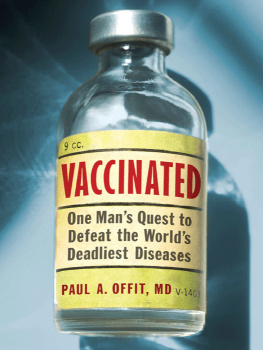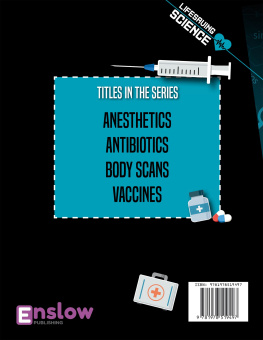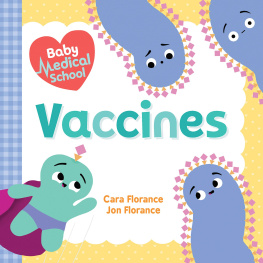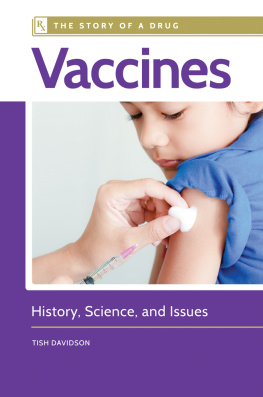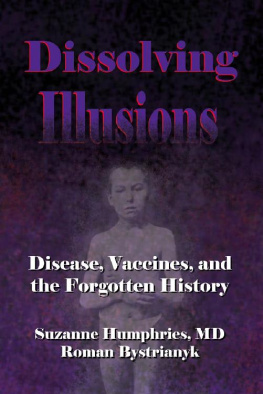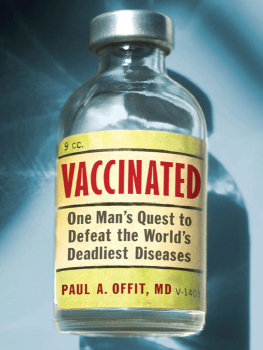F OR B ONNIE,
WHO MADE DREAMS COME TRUE,
AND FOR OUR CHILDREN, W ILL AND E MILY,
THE TWO METEORS STREAKING THROUGH OUR LIVES
And now, cried Max, let the wild rumpus start.
M AURICE S ENDAK, W HERE T HE W ILD T HINGS A RE
CONTENTS
S cientists aren't famous. They never endorse products or sign autographs or fight through crowds of screaming admirers. But at least you know a few of their names, like Jonas Salk, the developer of the polio vaccine; or Albert Schweitzer, the missionary who built hospitals in Africa; or Louis Pasteur, the inventor of pasteurization; or Marie Curie, the discoverer of radiation; or Albert Einstein, the physicist who defined the relationship between mass and energy. But I'd bet not one of you knows the name of the scientist who saved more lives than all other scientists combined-a man who survived Depression-era poverty; the harsh, unforgiving plains of southeastern Montana; abandonment by his father; the early death of his mother; and, at the end of his life, the sad realization that few people knew who he was or what he had done: Maurice Hilleman, the father of modern vaccines.
Hilleman's science followed a long, rich tradition.
In the late 1700s Edward Jenner, a physician working in southern England, made the world's first vaccine. Jenner found that he could protect people from smallpox-a disease that has claimed five hundred million victims-by injecting them with cowpox, a related virus.
One hundred years passed.
In the late 1800s Louis Pasteur, a chemist working in Paris, made the world's second vaccine. Pasteur's vaccine, made by drying spinal cords from infected rabbits, prevented the single most deadly infection of man-rabies. Only one person has ever survived rabies without receiving a rabies vaccine.
During the first half of the twentieth century, scientists made six more vaccines. In the 1920s French researchers found that bacteria made toxins and that toxins treated with chemicals could be used as vaccines. These observations led to vaccines against diphtheria, tetanus, and, in part, whooping cough. In the 1930s a researcher at the Rockefeller Institute in New York City made a yellow fever vaccine by growing the virus in mice and chickens. In the 1940s Thomas Francis, working at the University of Michigan, made an influenza vaccine by growing the virus in eggs and killing it with formaldehyde. And in the 1950s Jonas Salk and Albert Sabin, using monkey kidneys, made polio vaccines that eventually eradicated polio from the Western Hemisphere and much of the world.
The second half of the twentieth century witnessed an explosion in vaccine research and development, with vaccines to prevent measles, mumps, rubella (German measles), chickenpox, hepatitis A, hepatitis B, pneumococcus, meningococcus, and Haemophilus influenzae type b (Hib). Before these vaccines were made, Americans could expect that every year measles would cause severe, fatal pneumonia; rubella would attack unborn babies, causing them to go blind or deaf or become mentally retarded; and Hib would infect the brain and spinal cord, killing or disabling thousands of young children. These nine vaccines virtually eliminated all of this suffering and disability and death. And Maurice Hilleman made every one of them.
In October 2004, doctors told Hilleman that he had an aggressive form of cancer, one that had already spread to his lungs and would likely soon overwhelm him. During the six months before he died, Hilleman talked to me about his life and work. This book-the story of the triumphs, tragedies, controversies, and uncertain future of modern vaccines-is largely his story.
T he dedication of the National Millennium Time Capsule marked the end of the twentieth century. To fill the capsule, First Lady Hillary Clinton sent an invitation to four hundred presidential and congressional medal winners. You have been recognized for your contributions to the nation, she wrote. Now I would like to ask you for another contribution. If you could choose just one item or idea to represent America at the end of the twentieth century, and to be preserved for the future, what would it be?
Ray Charles submitted a pair of his sunglasses.
Wilma Mankiller, chief of the Cherokee Nation, submitted the eighty-five-letter Cherokee alphabet, hoping that her language would still be spoken a hundred years from now.
Hans Liepmann, a mathematician and scientist, submitted the first transistordeveloped by Bell Telephone Laboratoriesto mark the beginning of the electronic age.
Historian David McCullough submitted a borrowers card from the Boston Public Library, the first public library to let readers take books home.
President Ronald Reagan submitted a piece of the Berlin Wall to represent one countrys choice of democracy over communism.
Filmmaker Ken Burns submitted an original recording of Louis Armstrongs West End Blues.
Ernest Green, an African-American student caught on September 2, 1957, in a confrontation between Arkansas governor Orval Faubus and armed national guardsmen about his admission to an all-white public school, submitted his diploma from Little Rock Central High School.
Others submitted a microchip, the first artificial heart, a piece of the Transoceanic Cable, a copy of John Steinbecks The Grapes of Wrath , a film of Apollo II landing on the moon, broadcasts from the Metropolitan Opera, a piece of Corning Ware, a film of Jackson Pollock creating one of his drip paintings, a copy of the genetic code, Bessie Smiths recording of Nobody in Town Can Bake a Sweet Jellyroll Like Mine, and photographs of the earth from space, the atomic bombs mushroom cloud over Hiroshima, and American servicemen liberating prisoners from a Nazi concentration camp in Buchenwald.
The ceremonial placement of items in the time capsule took place on Friday, December 31, 1999, a brisk, windy, winter day in Washington, D.C. President Bill Clinton and First Lady Hillary Clinton spoke at the event, and ten thousand people lined the streets near the National Mall to watch. It was, after all, the transistor that launched the Information Age and enabled man to walk on the moon, said Mrs. Clinton. It was Satchmos trumpet that heralded the rise of jazz and of American music all over the world. And it was a broken block of concrete covered in graffiti from the Berlin Wall that announced the triumph of democracy over dictatorship. Bill Clinton expressed his hopes for the future. There is not a better moment to reflect on our hopes and dreams, and the gifts we want to leave to our children, he said.
Another man was on the platform that day: Maurice Hilleman. Few in attendance recognized him. Eighty years old, bent slightly forward, Hilleman slowly, cautiously padded over to the microphone, said a few words, and reached down to place his artifact into the capsule: a block of clear plastic six inches long, two inches high, and two inches deep. Embedded in the plastic were several small vials.
Although it was never mentioned during the ceremony, Americans now lived thirty years longer than they had when the century began. Some of this increase in longevity was caused by advances such as antibiotics, purified drinking water, improved sanitation, safer workplaces, better nutrition, safer foods, the use of seat belts, and a decline in smoking. But no single medical advance had had a greater impact than what was contained in Hillemans vialsvaccines.
Four years after the time capsule ceremony, a reporter asked Hilleman how it felt to stand next to the president of the United States on the centurys final day, how it felt to participate in a moment that crystallized his career. A taciturn, gruff, humble man, Hilleman was uncomfortable taking credit for what he had done, uncomfortable looking back. Chilly, he said.

